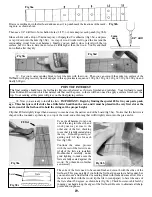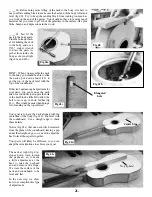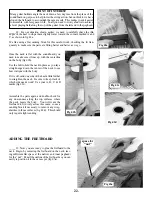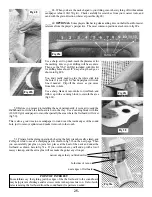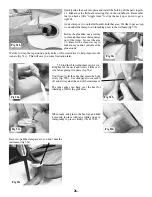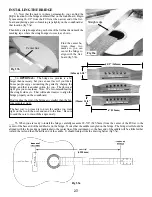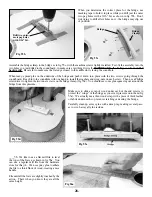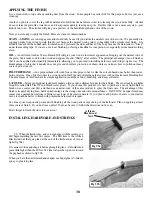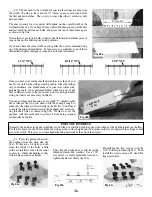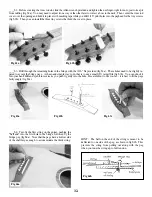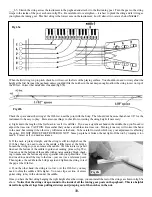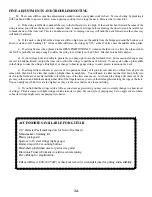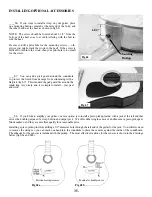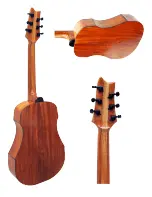
When you determine the correct place for the bridge, use
masking tape to hold it in place while you drill just the outer
two peg holes with a 3/16” bit, as shown in fig 55b. Don’t
risk trying to drill all six holes now - the bridge may slip out
of position.
Assemble the bridge clamp to the bridge as in fig 55c, with the machine screws lightly installed. Test-fit the assembly into the
two holes you just drilled in the soundboard, to make sure everything fits well.
IMPORTANT: the bridge can be installed
backwards!
Be careful to make sure the flat edge closest to the saddle slot is facing the soundhole.
When ready, spread glue on the underside of the bridge and push it down into place with the two screws going through the
soundboard. Reach into the soundhole with one hand to install the washers and wing-nuts on each screw. Then use a Phillips
screwdriver to tighten the two inner screws on the bridge clamp (fig 55d). You should see some glue squeezing out around the
bridge from this pressure.
Make sure to slide a scrap of wood under each of the end screws to
protect the “wings” of the bridge as you screw pressure onto them (fig
55e). We actually use a thin wood scrap with a piece of thick leather
or fabric underneath, to prevent scratching or denting the bridge.
Carefully clean up excess glue with a damp rag, making several pass-
es to scrub away all glue residue.
____56. We like to use a flat mill file to level
the tops of the frets, as shown in fig 56a. You
can use a regular mill file from the hardware
store for this job. We use epoxy glue to adhere
the file to a thick block of wood, creating a nice
handle.
File until all the frets are slightly touched by the
action. That’s when you know they are all the
same height.
Drill two outer-
most peg holes
with 3/16” bit.
Fig 55b
Fig 55d
Fig 55e
Fig 56a
28.
Bridge
Bridge
Clamp
Fig 55c
Summary of Contents for PARLOR
Page 36: ......






